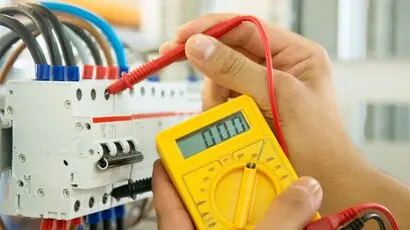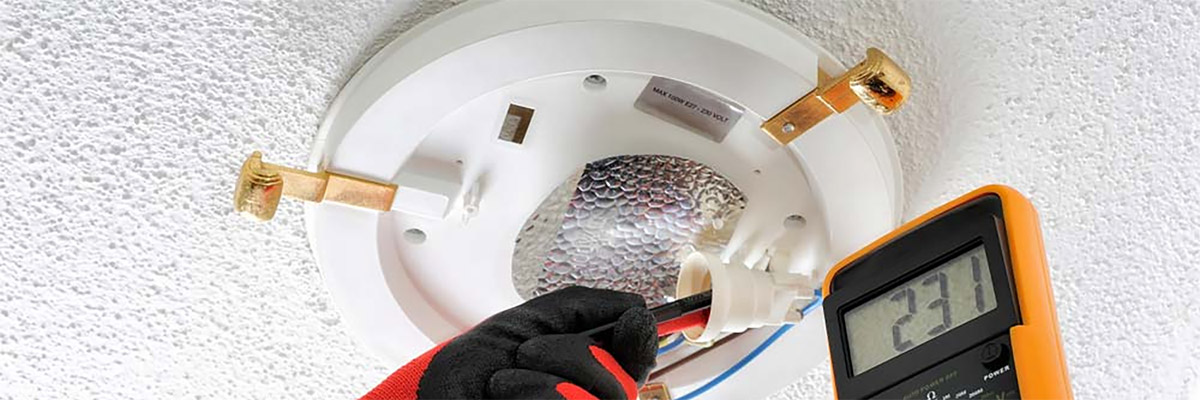Common Electrical Problems Every Home Owner Should Know About
Property owners frequently come across numerous electric problems that can impact safety and capability. Issues like flickering lights and stumbled breaker are much more usual than several realize. These circumstances can show much deeper electrical concerns that warrant focus. Understanding the risks and signs related to outdated electrical wiring and dead outlets is essential. What steps can be taken to avoid these troubles? Exploring these usual electrical concerns might disclose essential understandings for preserving a safe home setting.

Flickering Lights: Reasons and Solutions
Why do some house owners experience flickering lights? Flickering lights can be an usual aggravation, usually showing underlying electric concerns. One key reason is faulty or loosened links within light components or circuitry, which can result in periodic power supply. Furthermore, making use of high-wattage home appliances on the same circuit may create voltage variations, causing dimming or flickering. Another potential concern is an overloaded circuit, where a lot of tools draw power at the same time, stressing the electric system. Moreover, obsolete or degraded wiring can contribute to inconsistent electrical circulation. In many cases, flickering lights might signify a problem with the home's electrical panel or service line. House owners ought to attend to flickering lights without delay to avoid potential dangers. Solutions might include tightening up connections, redistributing appliance tons, or consulting a certified electrician for a comprehensive assessment. Identifying the root reason can assist ensure a stable and secure electrical system in the home.
Tripped Circuit Breakers: What You Required to Know
Have home owners ever questioned what causes their circuit breakers to journey all of a sudden? This typical concern typically occurs from an overload of electrical circuits, where too many devices attract power concurrently. In such cases, the breaker works as a security mechanism, disrupting the circulation of electrical power to avoid overheating and prospective threats. One more regular cause is a brief circuit, which happens when a real-time cord contacts a neutral cord, creating a surge of electrical energy that trips the breaker. Ground faults can likewise result in tripped breakers; these happen when a real-time cable touches the ground or a grounded surface area, presenting serious security threats. Homeowners should routinely evaluate their usage of high-wattage devices to stay clear of overloading circuits. Furthermore, understanding the function of circuit breakers can aid them respond properly during a trip, guaranteeing their home continues to be well-maintained and risk-free.
Outdated Circuitry: Indications and Dangers
Out-of-date electrical wiring can present substantial risks to property owners, commonly going undetected till troubles arise. Homes developed prior to the 1980s might still have aluminum electrical wiring or knob-and-tube systems, which are no longer thought about risk-free. Indications of outdated circuitry include flickering lights, frequently tripped circuit breakers, or burning smells near outlets. These signs may suggest that the electrical system is loaded down or deteriorating.Additionally, homeowners may see blister marks around switches or electrical outlets, which can show overheating. The risk of electric fires considerably raises with out-of-date electrical wiring, as these systems were not designed to deal with modern electric loads. Property owners are urged to have their electrical wiring examined regularly, particularly when renovating or adding new home appliances. By identifying these signs early, they can avoid harmful scenarios and maintain a safer living atmosphere. Upgrading to present electric standards is a proactive action in preserving home security and performance.
Frequently Blown Fuses: Repairing Tips
Regular blown merges can indicate underlying electric issues that may originate from out-of-date electrical wiring or overloaded circuits. Home owners experiencing this issue should initially identify the appliances attached to the impacted circuit. It is advisable to avoid utilizing several high-wattage tools all at once, as this can result in circuit overload. If the trouble persists, checking the circuit box for signs of wear or damages is essential; a malfunctioning fuse box might require replacement.Additionally, looking for loosened links within the circuit can help stop future incidents. Homeowners should also validate that the integrates being utilized are of the right amperage, as making use of an inaccurate fuse can intensify the trouble. If these fixing suggestions do not fix the issue, seeking advice from an accredited electrical contractor is suggested to examine the electric system better. Attending to these worries promptly can assist mitigate dangers and assure the security of the home's electrical infrastructure.
Dead Electrical Outlets: Typical Reasons and Fixes
When a property owner encounters a dead outlet, it can usually provide aggravation and complication. Several usual causes may lead to this problem. One frequent culprit is a tripped circuit breaker, which can be conveniently reset. If any kind of breakers are in the off position, property owners need to examine their electrical panel to examine. Another possibility is a malfunctioning outlet itself, which may call for replacement. Additionally, loose circuitry links within the outlet can interfere with power circulation, making evaluation essential.Sometimes, the problem may come from an overloaded circuit, particularly when multiple devices are connected. In such cases, redistributing the electric lots can resolve the concern. House owners must additionally think about the age of their electrical wiring; older systems may call for updates to meet modern-day electrical needs. If these actions do not correct the situation, seeking advice from a licensed electrical expert is recommended to ensure safety and security and correct diagnosis.
Electrical Shocks: When to Be Concerned
How can home owners figure out whether an electrical shock warrants problem? House owners should first evaluate the seriousness and context of the shock. A light fixed shock, typically really felt when touching steel items, is usual and generally safe. Nonetheless, if the shock occurs while communicating with a plugged-in home appliance or outlet, it may show a much more severe issue.The place and frequency of the shocks are crucial. Repeated shocks from the exact same source, specifically in wet areas like bathrooms or cooking areas, could signal malfunctioning circuitry or insufficient grounding. Property owners need to also consider the sensation of the shock; a jolt that creates discomfort or contraction is extra disconcerting than a plain tingle.If there's any kind of unpredictability, it is a good idea to seek advice from a certified electrical contractor. Ignoring possible electric hazards can bring about major security risks, including fire or serious injury.
Overloaded Circuits: Avoidance and Safety Measures
Overloaded circuits pose substantial threats in property setups, frequently leading to electric fires or tools damage (ASP Level 2 Electrician). Property owners have to recognize the signs of an overloaded circuit, my review here such as frequently tripped breakers or dimming lights. Executing preventive safety and security techniques can help minimize these threats and assure a safer living environment
Acknowledging Overloaded Circuits
What indicators show that a circuit may be overwhelmed? Homeowners should be vigilant for numerous vital signs. Regularly stumbled circuit breakers or blown fuses suggest excessive load on the circuit. Lowering or flickering lights, especially when various other devices remain in use, can symbolize a poor power supply. In addition, electrical outlets or switches that feel warm to the touch may suggest getting too hot, a prospective fire threat. Unusual humming audios from electrical outlets likewise necessitate focus, as they can symbolize electric problems. If home appliances run inefficiently or fail to begin, it might be an indicator of an overloaded circuit. Recognizing these indicators early can help prevent major electric issues and promote a much safer home setting.
Preventive Safety Practices
To maintain a secure and reliable electrical system, property owners must apply preventive security practices that deal with possible circuit overloads. One efficient action is to stay clear of connecting a lot of gadgets to a solitary outlet, as this can surpass the circuit's capability. Making use of power strips with integrated breaker can aid distribute power securely. Homeowners ought to additionally consistently examine cords and devices for damages and change any type of damaged equipment informative post promptly. It is essential to ensure that breaker are operating correctly and to be mindful of the total wattage being used in each circuit. Furthermore, seeking advice from a qualified electrical expert for periodic assessments can recognize prospective concerns before they escalate, assuring a safer living setting and lengthening the life expectancy of electric systems.
Frequently Asked Inquiries
Exactly how Commonly Should I Have My Electrical System Inspected?
Normal assessments of electric systems are advised every 3 to five years. Home owners must consider a lot more frequent checks if they experience problems, embark on remodellings, or stay in older buildings to ensure safety and security and conformity.
Can I Take Care Of Electrical Troubles Myself or Hire an Expert?

What Are the Indicators of an Electrical Fire Risk?
Indicators of an electric fire risk consist of frequently stumbled circuit breakers, flickering lights, burning smells, stained outlets, or cozy, humming cables. Home owners ought to remain alert and look for expert support if any one of these indications are existing.
Exactly how Do I Know if My Home Requirements an Electric Upgrade?
To identify if a home requires an electrical upgrade, indicators consist of regular circuit breaker trips, outdated circuitry, inadequate electrical outlets, flickering lights, and the presence of older electrical panels, showing possible safety dangers and ineffectiveness.
Are There Particular Safety Tips for DIY Electric Job?
When taking into consideration DIY electrical work, one need to constantly turn off power, make use of insulated devices, validate circuit functionality, follow neighborhood codes, and seek advice from experts for intricate jobs to guarantee security and stop accidents. Another prospective concern is an overloaded circuit, where as well lots of devices attract power at the same time, straining the electric system. The threat of electric fires considerably increases with outdated wiring, as these systems were not created to handle modern-day electric tons. Regular blown integrates can show underlying electric issues find out here that might stem from obsolete electrical wiring or overloaded circuits. To keep a reliable and safe electrical system, home owners need to execute preventive safety practices that address possible circuit overloads. Level 2 Electrician Sydney. Indications of an electric fire threat include regularly tripped circuit breakers, flickering lights, shedding smells, discolored electrical outlets, or warm, buzzing cables